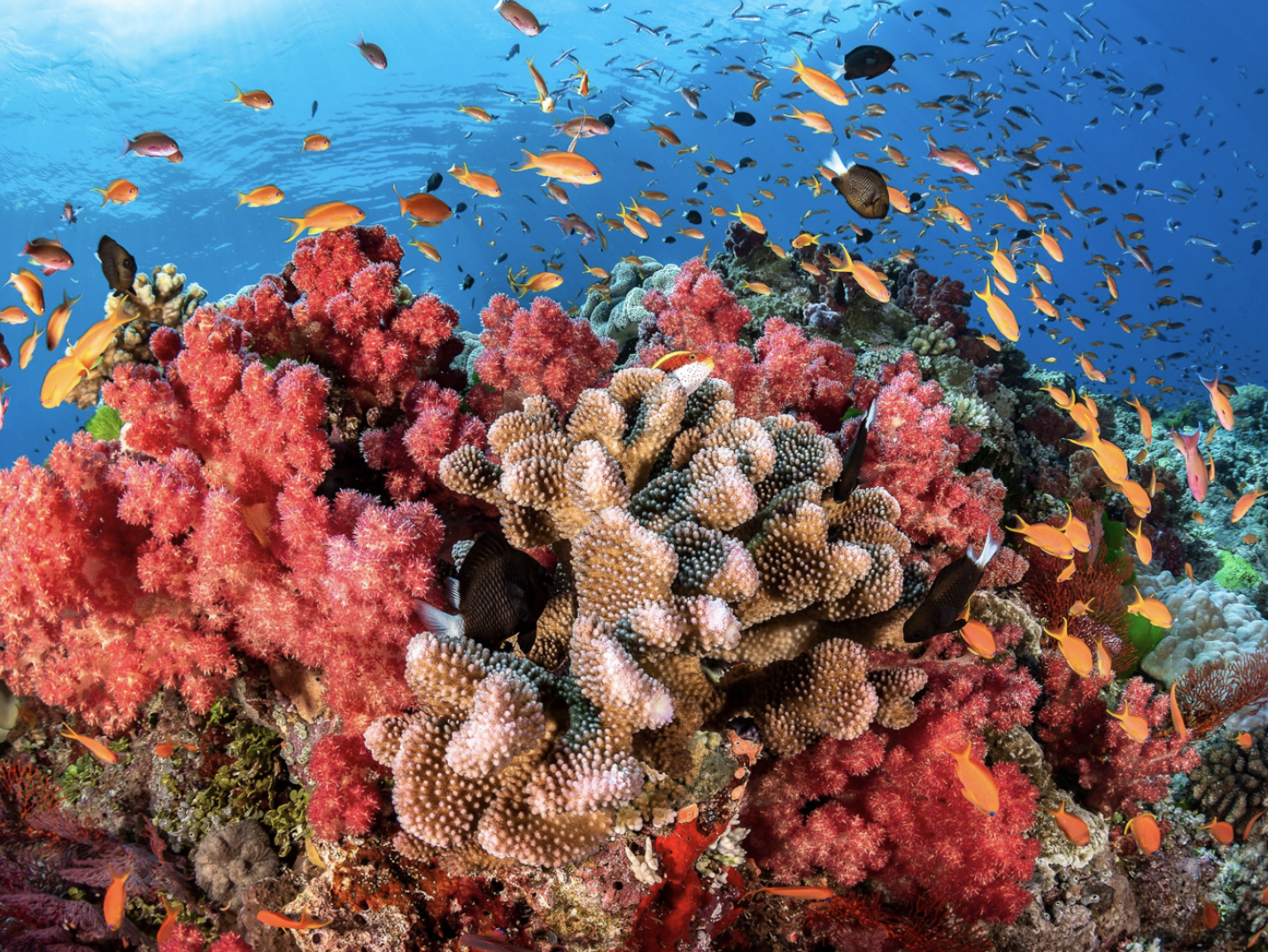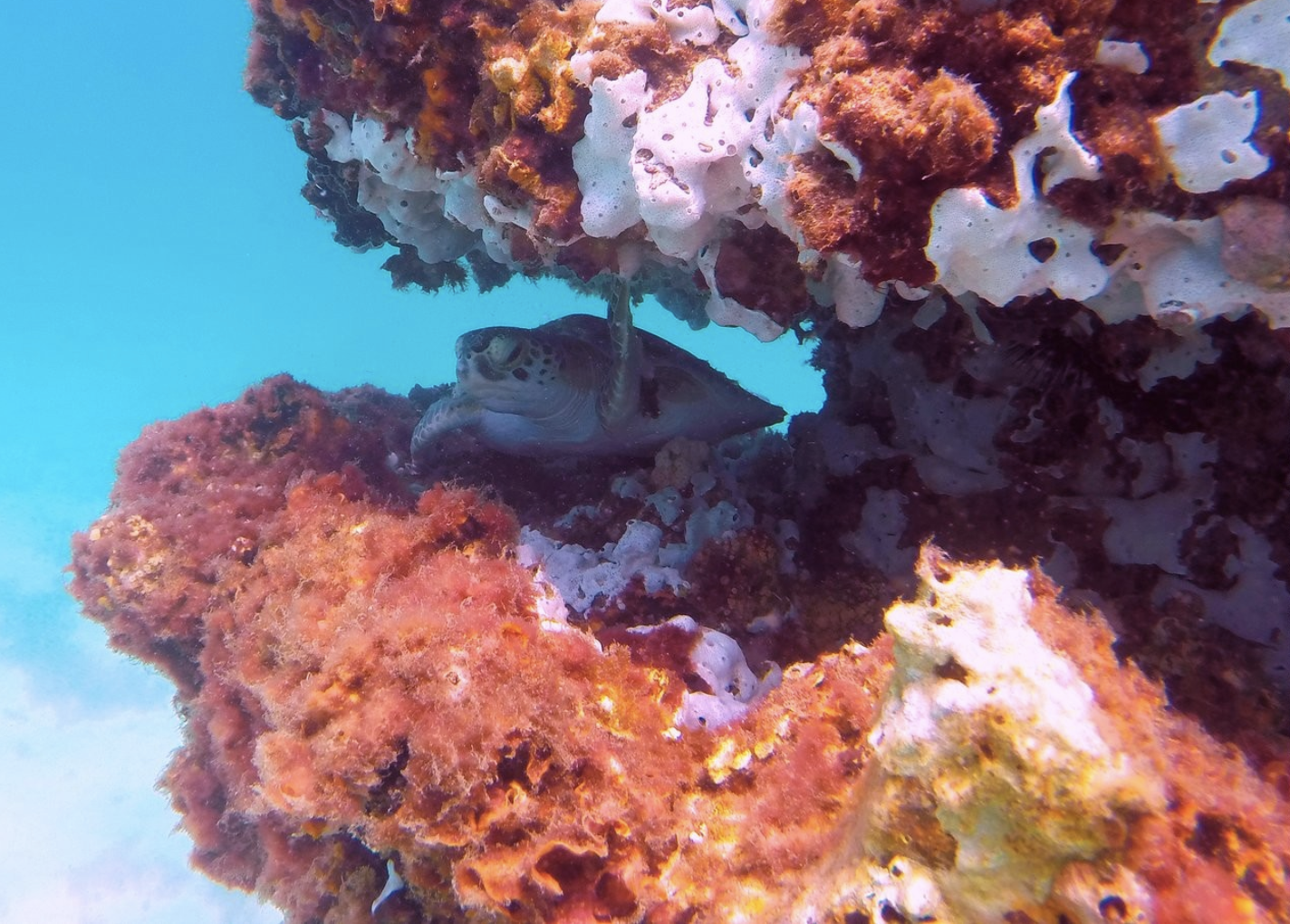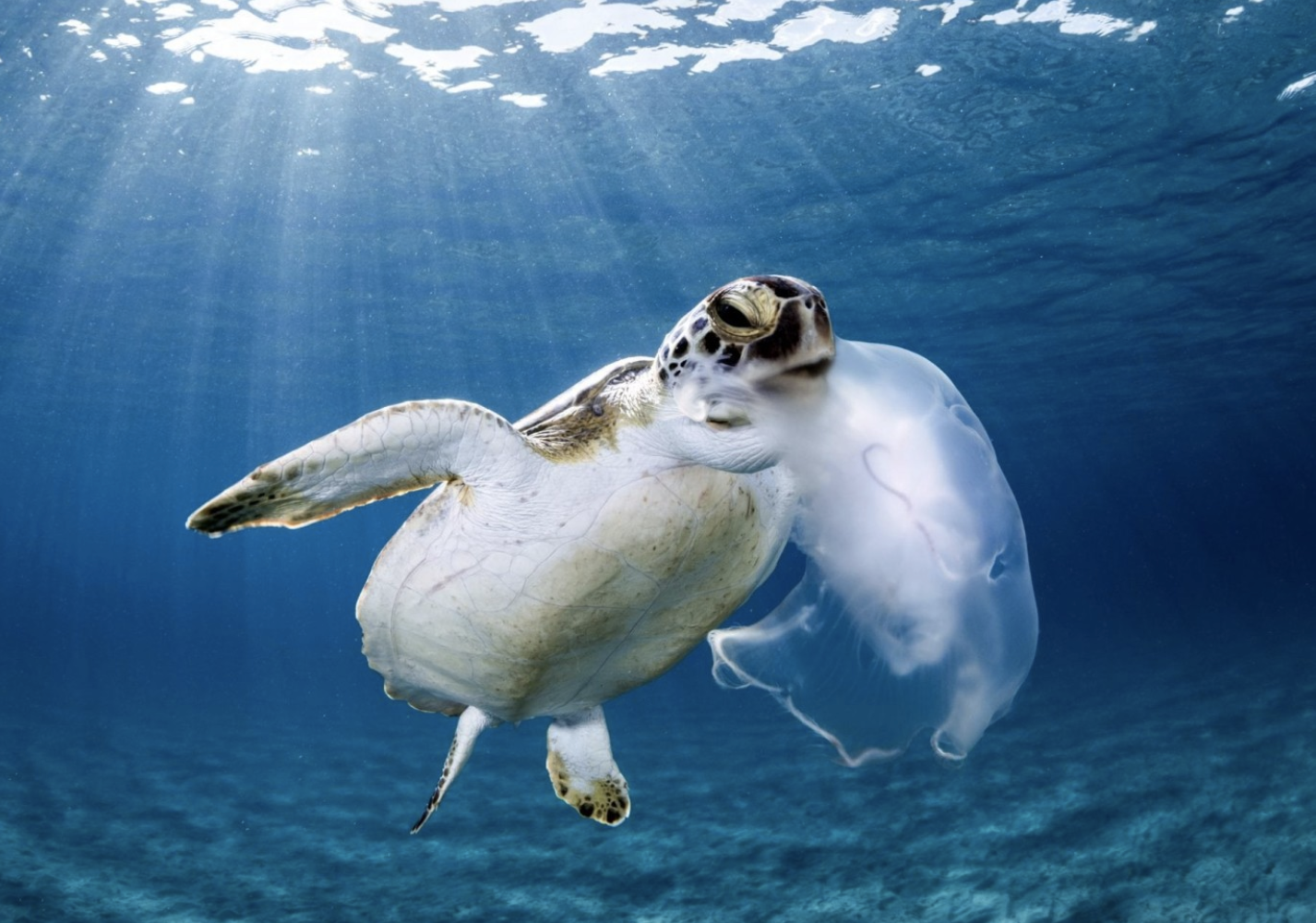
Coral reefs and sea turtles share a mutually beneficial relationship. Both are iconic symbols of the world’s oceans and play critical roles in maintaining the health and biodiversity of these underwater habitats. The interdependence between coral reefs and sea turtles is a good example of the intricate web of life that exists within our marine environments.
Why are coral reefs important for sea turtles?
Coral reefs, often referred to as the “rainforests of the sea”, are marine ecosystems composed of calcium carbonate structures formed by coral polyps. Much like rainforests, the coral reefs provide essential breeding, nursery, and feeding grounds for a wide range of species, including sea turtles.

Wildlife in the coral reef
Coral reefs are an important feeding ground for sea turtles. Several species of sea turtles, such as green turtles and hawksbill turtles, are herbivores and have a diet primarily composed of seagrass and algae. These seagrasses and algae thrive in the shallow waters surrounding coral reefs, where they receive ample sunlight for photosynthesis.
Moreover, coral reefs provide shelter and protection for sea turtles during various life stages. For example, young sea turtles hide in coral reef habitats to escape predators and rough ocean conditions.

Sea turtle hiding in a coral structure
Furthermore, coral reefs protect coastlines from erosion and storm damage by acting as natural barriers. As sea turtles lay their eggs on beaches, these reefs play a crucial role in safeguarding nesting sites.
Lastly, sea turtles often rely on coral reefs’ unique shapes and features to find their way across the oceans.
Why are sea turtles important for coral reefs?
One of the most evident connections between coral reefs and sea turtles is their feeding relationship. Sea turtles are known as “keystone species” within coral reef ecosystems, meaning their presence or absence significantly impacts the entire ecosystem’s structure and biodiversity.
For instance, when sea turtle populations decline, there is a potential increase in the populations of their prey, such as jellyfish and sponges. This imbalance can negatively affect the health of coral reefs by causing shifts in the abundance of other species and disrupting the delicate ecological balance.

Turtle eating jellyfish
On the other hand, when sea turtle populations are healthy and thriving, their grazing activities help control the abundance of these prey species. By doing so, sea turtles help maintain the equilibrium within the reef ecosystem, supporting the growth and survival of coral and other marine species.
Furthermore, sea turtles play a role in nutrient cycling, as they transport nutrients from their feeding grounds to their nesting beaches, benefiting the coastal ecosystems and enhancing overall biodiversity.
![]() Healthy coral reef habitat
Healthy coral reef habitat
Despite the apparent mutual benefits between coral reefs and sea turtles, both face significant threats due to human activities. Climate change, ocean pollution, habitat destruction, and unsustainable fishing practices all pose severe risks to these vital ecosystems. The survival and well-being of one species are deeply intertwined with the other, emphasizing the importance of preserving these critical habitats.
Recognizing the significance of these interdependent relationships serves as a reminder of the responsibility we have to protect and conserve these fragile ecosystems and the marine life they support. Through concerted conservation efforts and global awareness, we can ensure the long-term survival of both coral reefs and sea turtles, preserving the beauty and diversity of our oceans for generations to come.




